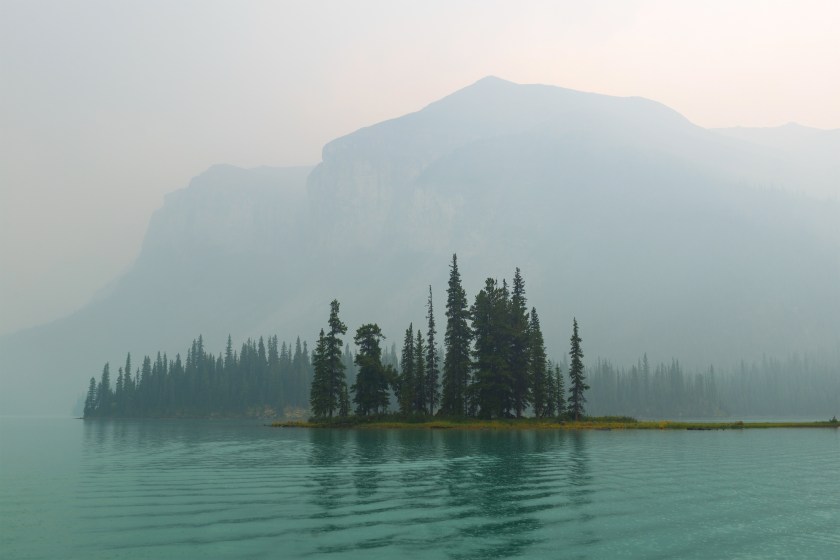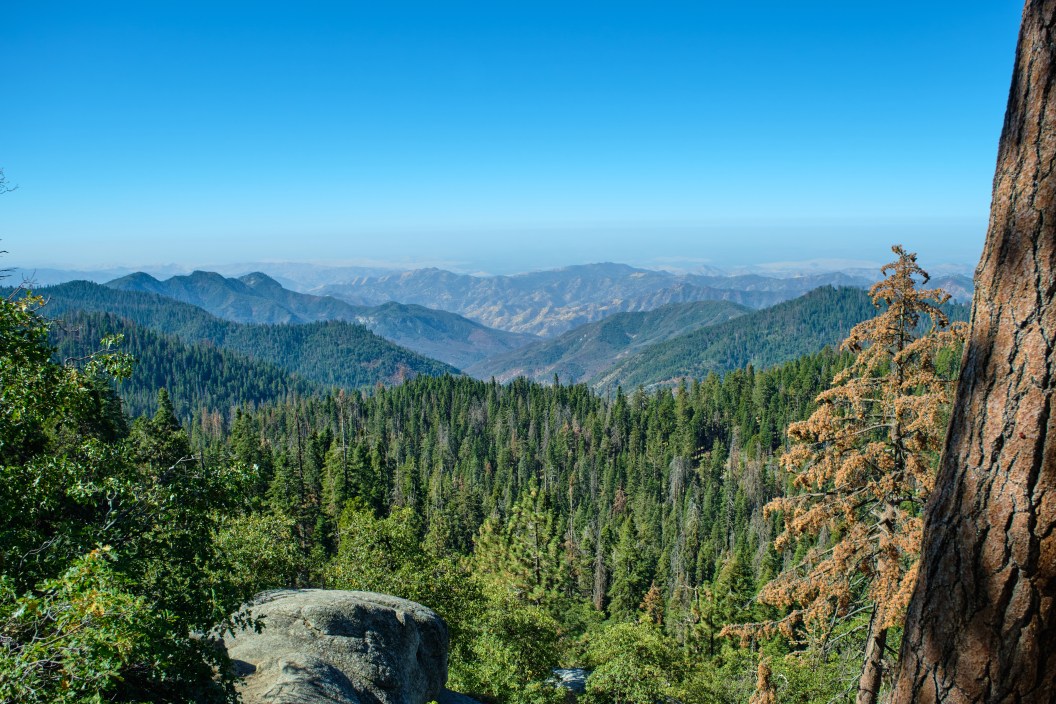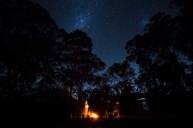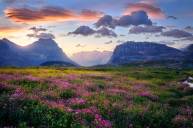When planning a national park trip, the biggest concerns most people have is whether the park will be too crowded to enjoy the beautiful views. Sure, we may also worry about dangerous wildlife—but it's unlikely that the park's air quality crosses our mind.
Heading out into nature is typically synonymous with catching a breath of fresh air and seeing the skies without light pollution. But the recently published 2024 National Parks Conservation Association (NPCA) study reveals the shocking news that 97% of parks have "unsatisfactory levels of visibility impairment overall, indicating they are far from achieving clean air or clear skies." What's more, that stat has gone up up since 2019, the last time the survey was conducted—marking a step in the wrong direction.
Hazy skies are the top concern, coming in at 98% of parks affected. Haze pollution affects visibility within the parks, making it difficult for hikers, kayakers, and campers to see, especially when it comes to distance and depth. According to the National Park Service, pollutants that affect haze levels are sulfates, nitrates, chloride from sea salt, organics, elemental carbon (or soot), fine soil, and coarse mass. Currently, the agency monitors levels in 46 national parks, using samplers from the Interagency Monitoring of Protected Visual Environments, webcams, and nephelometers.
Parks with the haziest skies are:
- Sequoia & Kings Canyon in central California
- Gateway Arch in San Francisco
- Mammoth Cave in Kentucky
- Carlsbad Caverns in New Mexico
- Indiana Dunes National Lakeshore
- Hot Springs in Arkansas
- Death Valley on the California/Nevada border
- Channel Islands in central California
- Dry Tortugas in the Florida Keys
- Pinnacles in central California

Getty Images, SL_Photography
The next issue that was most prevalent, according to the survey, is unhealthy ozone levels, which affects 96% of parks. Ozone pollution occurs when "volatile organic compounds (VOCs) react with nitrogen oxide emissions in the presence of sunlight," according to NPS. It's monitored across the parks by 102 ozone monitors, 36 of which are managed by NPS, while the EPA and other agencies take care of the rest, with all data reported to the EPA. Inhaling ozone can bring on asthma attacks and make breathing hard for those with other respiratory illnesses.
Most affected by high ozone levels are four California parks: Sequoia and Kings Canyon, Joshua Tree, Mojave, and Yosemite. Rounding out the top 5 is Carlsbad Caverns in New Mexico, and the remaining of the top 10 are Death Valley, Indiana Dunes, Guadalupe Mountains in western Texas, Rocky Mountain in Colorado, and White Sands National Monument in New Mexico.
"Visitors to national parks expect clean air and clear skies whether they are visiting stunning wilderness landscapes or urban monuments," said Ulla Reeves, interim director of NPCA's Clean Air Program, in a press release. "The trouble with air pollution is that it knows no bounds and harms the places we love and communities which rely on them for clean air and a healthy climate. It's imperative that we take timely action to protect our national parks that we love, safeguard the climate, and ensure the health and wellbeing of visitors, nature, wildlife, and surrounding communities."
Overall, the four most polluted parks in the nation are all in California, a state known for its rigorous climate-forward policies. The report attributes the pollution to vehicles, industrial operations, and farming in the Central Valley. However, the Golden State has had many wildfires over the last couple of years, with some directly affecting those parks and reducing the amount of trees.
In 2021, the KNP Complex Fire burned 88,307 acres of Sequoia and Kings Canyon National Park, with Redwood Mountain Grove losing between 974 and 1,574 large sequoias. That devastating fire wasn't the only one that year, either. By the end of 2021, over 2.5 million acres had burned statewide, with air quality plummeting as smoke lingered for months on end. According to Cal Fire statistics, 2022 and 2023 had similar fire years, with around 700,000 acres burning throughout the state.




